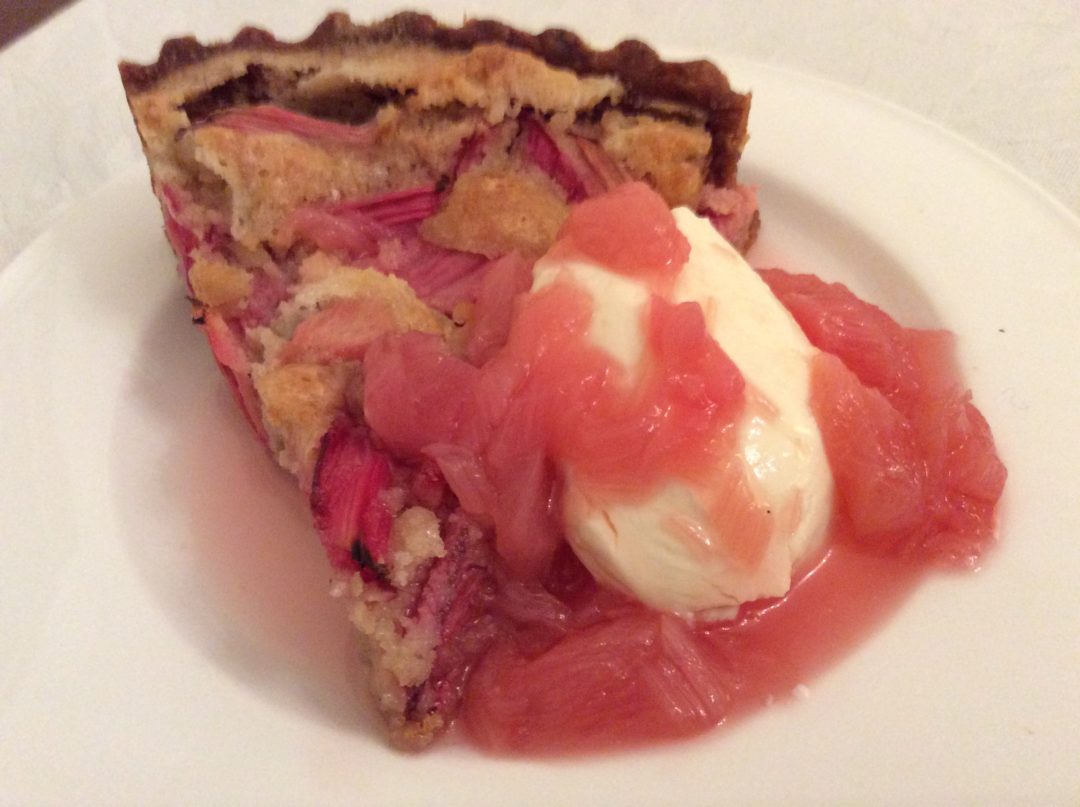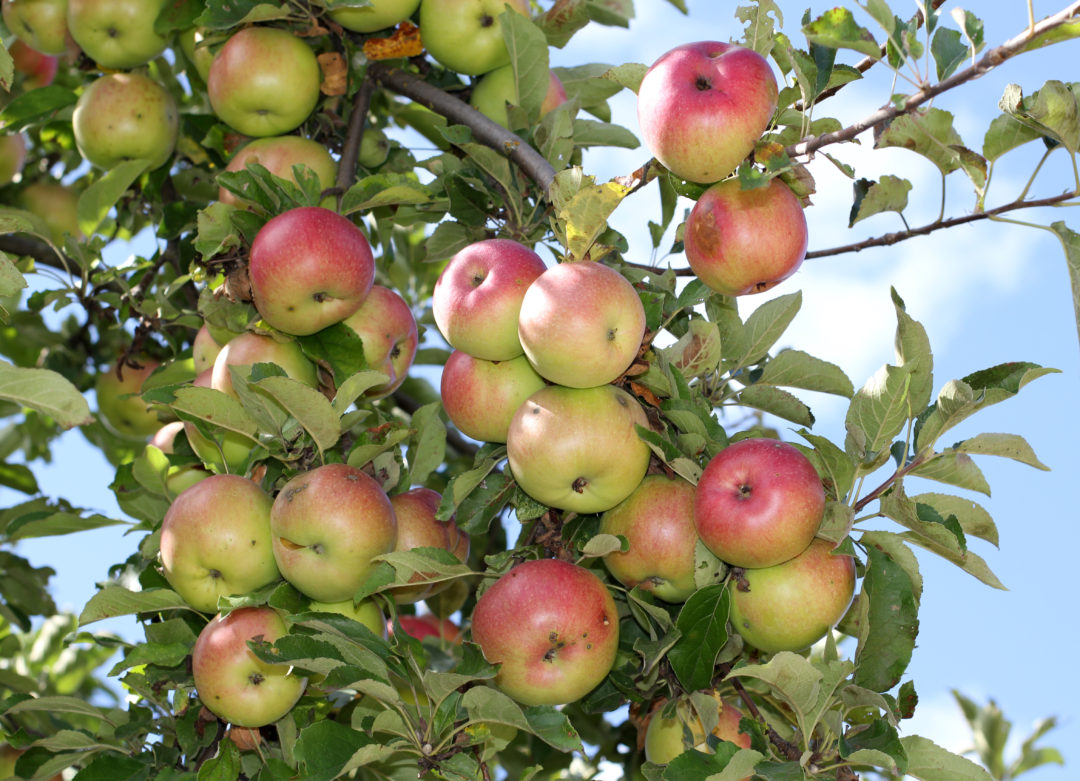The end of winter is marked for me by the appearance of two fruits – rhubarb and blood oranges. Recently, winter seems not to have taken the hint and has been hanging around beyond the forced rhubarb season. This tart however, is delicious whatever the weather. And yes, I know that rhubarb is botanically not a fruit, but I would hope you agree that in the kitchen, it tends to be used as if it were. When the first forced rhubarb appears, delicate and elusively fragrant, I like to do as little as possible to it. I poach it gently with the juice of a blood orange and a tablespoon of honey. It is my absolutely favourite breakfast with a good yogurt, the zest of the orange and walnuts. And in a Moka full of Illy coffee and I can face whatever the day decides to lob at me.
Once the forced rhubarb is over and we have the sturdy maincrop stalks, I do like to experiment rather more. Although I have to say that for me, baked mackerel with rhubarb sauce was an experiment too far. More perhaps, I have to say, because I really can’t cope with mackerel and should not have tried (yet again) to get past my dislike. In my defence, at least I do regularly revisit my few dislikes to see if I’ve changed my mind. Still hate sweetcorn, though, in any and all of its manifestations.
A much more successful experiment was when I pottered about with almonds, which I think complement so many fruits, and arrived at this tart. It is an absolute breeze to make and works warm or cold as a dessert and has been consumed here with yogurt for breakfast. No, I am not saying who did that…
Don’t feel you have to make the pastry yourself here; there are excellent ready made, all-butter pastries on the market and resist those people who think using ready made is the eighth sin. I do not, regrettably have my late mother’s gift as a pastry cook and if it weren’t for my Magimix, I would never willingly make pastry. For sweet dishes I now use exclusively the Italian method of Pasta Frotta and so far, it hasn’t let me down; however, feel free to use your favourite sweet pastry recipe here. Should pastry making not be your thing, and if you have access to the French brand “Marie” (available on Ocado) then use that without a second thought.
RHUBARB AND ALMOND TART WITH GIN POACHED RHUBARB SAUCE
Print RecipeIngredients
- Pastry
- 250g plain flour or Italian Tipo 00
- 125g unsalted butter, very cold from the fridge and cut into small cubes
- 1 medium free range egg, lightly beaten
- 100g icing sugar
- finely grated zest of half an unwaxed lemon
- tiny pinch of sea salt
- Filling
- 125g softened unsalted butter, plus extra to grease the tin
- 125g golden caster sugar plus 2 tbsp
- 1 medium free range egg
- 125g ground almonds
- 1 tsp ground ginger (optional)
- 250g rhubarb, cut into 3cm chunks
- Poached Rhubarb
- 150g rhubarb, cut into 1cm chunks
- 2 tbsp caster sugar (or more if you prefer)
- 2 tbsp gin
- A buttered 23cm loose bottom flan tin
- Baking parchment
- Baking beans
Instructions
Set the oven to 170C fan
To make the pastry, place the flour and butter in a food processor and whizz until fine breadcrumb stage
Add the sugar, mix briefly and add the egg, salt and lemon zest
Whizz until a soft dough is achieved; tip out of the processor and form into a flattened ball, wrap in clingfilm and put in the fridge for at least 30 minutes
When time is up, roll out to fit the flan tin and press the dough gently into the tin
Prick the base with a fork, line with baking parchment then tip the baking beans on top
Put in the oven for 20 minutes, after which remove the paper and cook for another 5 minutes until the tart shell is crisp and golden
It’s really important to get the shell crisp as otherwise the moist almond mixture will result in the dreaded “soggy bottom”
While the shell is baking, prepare the almond filling
Beat the softened butter and golden caster sugar until light and fluffy, then beat in the egg
Fold in the ground almonds and ginger
When the shell is ready, spread the almond mixture and press the rhubarb pieces into the mixture in a cartwheel pattern, or whatever pleases you
Sprinkle over the 2 tbsp of sugar
Put the tart in the oven and bake for 35 - 40 minutes until the tart is golden and puffy
Now make the poached rhubarb:
Put the second lot of rhubarb in a saucepan with a good heat conducting base, add the sugar and the gin
Heat until bubbling and then simmer gently until the rhubarb disintegrates - this doesn’t take long so don’t wander off and start the ironing
Bubble more fiercely until reduced by about one third
Remove from the heat and allow to cool slightly
If you want the final dish to be more refined, you can at this point, press the mixture through a sieve; I was a bit up against the clock when I made the tart pictured so this sauce isn’t sieved
Serve slices with either ice cream or creme frâiche and then drizzle over the gin sauce
Notes
You can change this round a bit too, by putting orange zest in the pastry and orange juice in the sauce - or Grand Marnier, perhaps. The tart can be re-heated and also freezes well for up to about a month.


